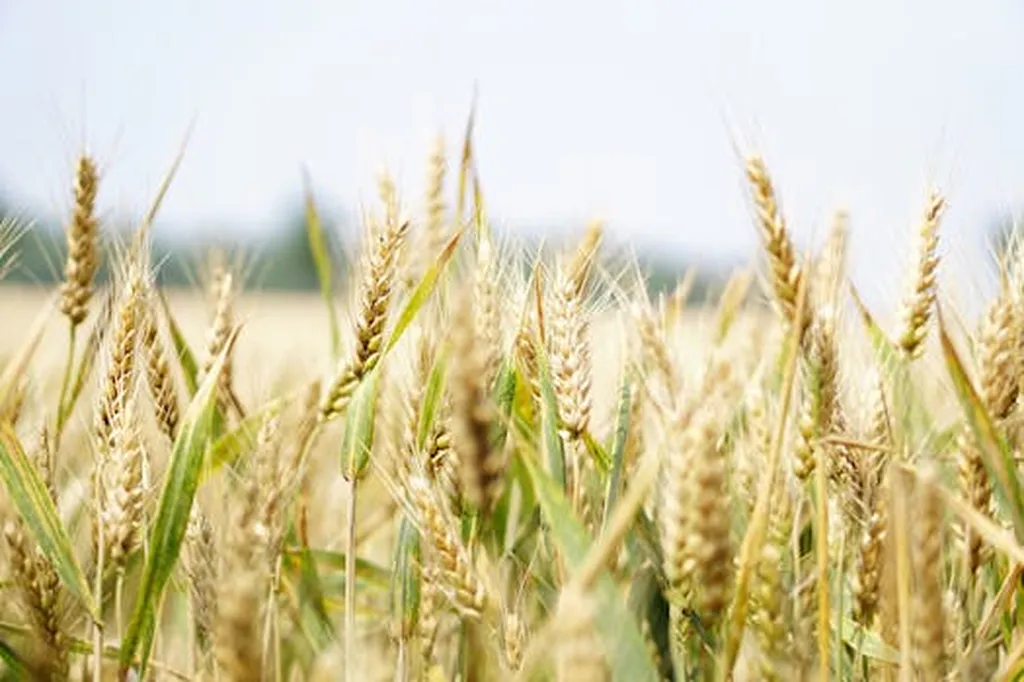In the heart of India’s agricultural landscape, a quiet revolution is taking place, one that promises to reshape the way we think about crop productivity and sustainability. At the forefront of this transformation is Dr. Kadapa Sreenivasa Reddy, a researcher from the Division of Agronomy at the ICAR-Indian Agricultural Research Institute in New Delhi. His recent study, published in the journal ‘Scientific Reports’ (which translates to ‘Nature Research’), is shedding new light on the potential of nano fertilizers to boost wheat yields, improve nutrient efficiency, and enhance profitability.
The study, conducted over two growing seasons (2022–23 and 2023–24), explored the use of nano Diammonium Phosphate (DAP) as a foliar spray to supplement traditional phosphorus fertilization in wheat cultivation. The results are striking. By combining 100% of the recommended phosphorus dose with two foliar sprays of nano DAP, Reddy and his team observed grain yield increases of 34.8% and 14.7% in the first and second seasons, respectively, compared to the control.
However, the story doesn’t end there. The research also revealed that reducing the phosphorus application to 75% of the recommended dose, coupled with nano DAP sprays, could achieve yields comparable to the full dose. This finding is particularly significant for farmers, as it opens up avenues for cost savings and reduced environmental impact.
“Our results demonstrate that nano DAP has the potential to revolutionize wheat cultivation,” said Reddy. “By optimizing nutrient use efficiency, we can enhance productivity while minimizing the environmental footprint of agriculture.”
The economic implications of this research are substantial. The study found that the optimized nano DAP treatment led to net returns of US $ 958.60 and US $ 1,197.10 per hectare per year in the two seasons, respectively. This is a testament to the potential of nano fertilizers to boost profitability in the agricultural sector.
The implications of this research extend beyond the field. As the world grapples with the challenges of climate change and food security, innovations like nano DAP offer a glimmer of hope. They represent a step towards more sustainable and efficient agricultural practices, which are crucial for feeding the growing global population.
Moreover, the energy sector could also benefit from these advancements. As the demand for biofuels continues to rise, the need for efficient and sustainable crop production becomes even more pressing. Nano fertilizers could play a pivotal role in this context, enhancing the productivity of energy crops and contributing to a more sustainable energy future.
Reddy’s research is a testament to the power of innovation in agriculture. It underscores the importance of investing in agritech research and highlights the potential of nano fertilizers to transform the agricultural landscape. As we look to the future, it is clear that innovations like nano DAP will play a crucial role in shaping a more sustainable and productive agricultural sector.
In the words of Reddy, “This is just the beginning. The potential of nano fertilizers is vast, and we are only scratching the surface. The future of agriculture lies in our ability to innovate and adapt, and nano fertilizers are a significant step in that direction.”
As we navigate the challenges of the 21st century, it is innovations like these that will light the way, guiding us towards a more sustainable and food-secure future. The journey is just beginning, and the possibilities are endless.

